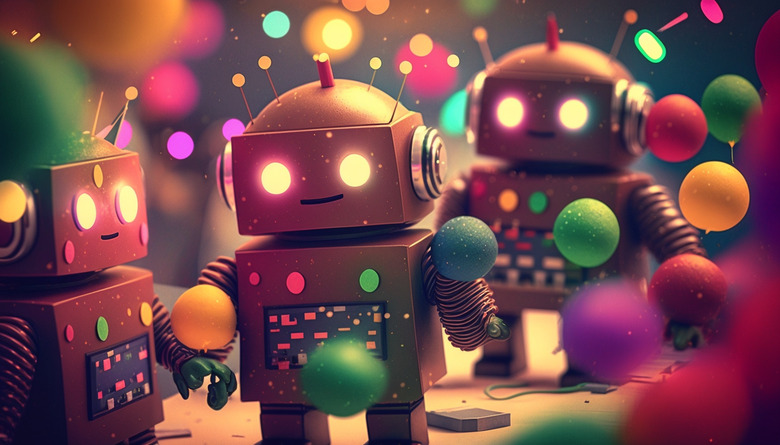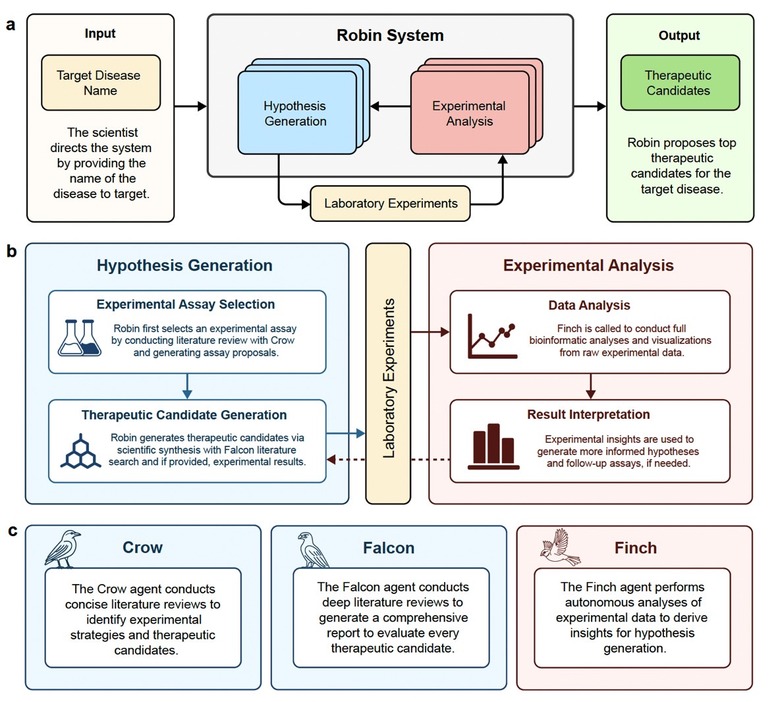This AI System Found A Potential Cure For Blindness
People developing frontier AI models often speculate about how amazing the world will be once AGI and AI superintelligence are available. OpenAI CEO Sam Altman's recent essay is the latest example of that. Once superhuman intelligence is reached, the AI will make scientific discoveries that are beyond our reach for now, significantly improving our lives and well-being. There's also the possibility of AI taking over the world, of course. But we don't like to entertain it too much.
Once that age of AI superintelligence arrives, we might see cancer eradicated, or a cure for diabetes and other types of illnesses that impact hundreds of millions of people. One can hope that AI will lead us there, at least.
But we don't have to wait for one AI firm or another to proclaim that AGI is here to see meaningful developments in the field of medicine driven by AI. AGI, by the way, is the intermediate AI step we need to reach before superintelligence.
Researchers from FutureHouse designed an AI system to automate scientific discovery. Called Robin, it's a scientist's companion that has several AI models to assist with the various stages of a discovery.
Robin AI helped the researchers find a potential cure for a condition called dry age-related macular degeneration (dAMD) that can lead to irreversible blindness in the elderly. As many as 200 million people suffer from dAMD. The Robin AI system helped the scientists come up with a potential treatment by repurposing a drug called ripasudil, which is also used to treat glaucoma.
How it works
Robin AI isn't just one large language model. It has three components, each made of separate LLMs that handle specific aspects of the research process:
- Crow, Falcon, and Owl perform literature searches and synthesis
- Phoenix is responsible for chemical synthesis design
- Finch does complex data analysis
The way Robin works is actually brilliant. First, Crow analyzed the relevant literature for dAMD (around 550 studies) and proposed a hypothesis for the study. Crow suggested that enhancing retinal pigment epithelium (RPE) phagocytosis could be a potential treatment for dAMD.
Robin's Falcon then looked at candidate molecules that might be able to achieve the goal above. The RPE layer of cells eats debris from the photoreceptors. RPE failure leads to dAMD. Falcon found 10 candidates that the scientists tested in the lab.
Finally, Finch analyzed the data from the tests that humans ran in the lab. This AI agent found a Rho-kinase (ROCK) inhibitor called Y-27632 would increase RPE phagocytosis in cell cultures.
What Robin found
The research didn't stop here. The scientists had Robin look at the data and propose a new round of testing based on the previous findings.
This time, the AI co-scientist system proposed a genetic experiment. It suggested an RNA-sequencing test to see if the ROCK inhibitor found during the previous stage could induce gene expression changes that would convince the RPE layer to eat more of the debris that builds up.
The new experiment ended with Finch discovering that Y-27632 upregulated ABCA1, a gene that acts as a pump for lipids (cholesterol) in RPE cells. The ROCK inhibitor practically told cells to eject more fat.
Robin looked at the data from the first round of testing and then proposed a second set of drug candidates. The list included ripasudil, a drug that's already approved to treat eye conditions (glaucoma). Ripasudil raised phagocytosis 7.5 times. That is, the drug might increase the rate at which RPE destroys debris significantly. Preventing that accumulation would prevent blindness.
The entire process took only two and a half months, allowing researchers to discover a potential cure for blindness much faster than traditional methods that do not involve AI models.
The scientists picked the dAMD project to put the Robin AI to the test, but they could have used any disease that impacts a large number of people.
Will ripasudil treat dAMD?
That's not to say that ripasudil will become the standard dAMD treatment to prevent blindness. But it's very likely that doctors will consider the therapy once additional tests prove the AI's hypothesis and solution are correct. Only after human trials are successful will the drug be used for dAMD.
What's great about this process is that Robin found a drug that's already approved for use rather than discovering a new molecule that might need years of additional testing.
The Robin experiment isn't the first to use AI for repurposing existing drugs to treat other conditions. But this system is more complex than having an AI read massive amounts of studies to find side effects in existing drugs that might treat illnesses other than the conditions they were made for.
Here, one of Robin's LLMs does the reading and suggests solutions. The other AI models in Robin come up with molecules and then analyze the data from lab experiments. The humans are needed only to run the experiments, verify the output from AI models, and tweak algorithms and prompts.
I wouldn't be surprised if similar research leads to the discovery of brand-new therapies for all sorts of conditions in the future.
Also important is the researchers' decision to release Robin as an open-source project. Others might use it to run similar experiments or build their own AI systems that can act as co-scientists.
The following clip does a great job explaining this AI breakthrough. You'll find the full study at this link.

